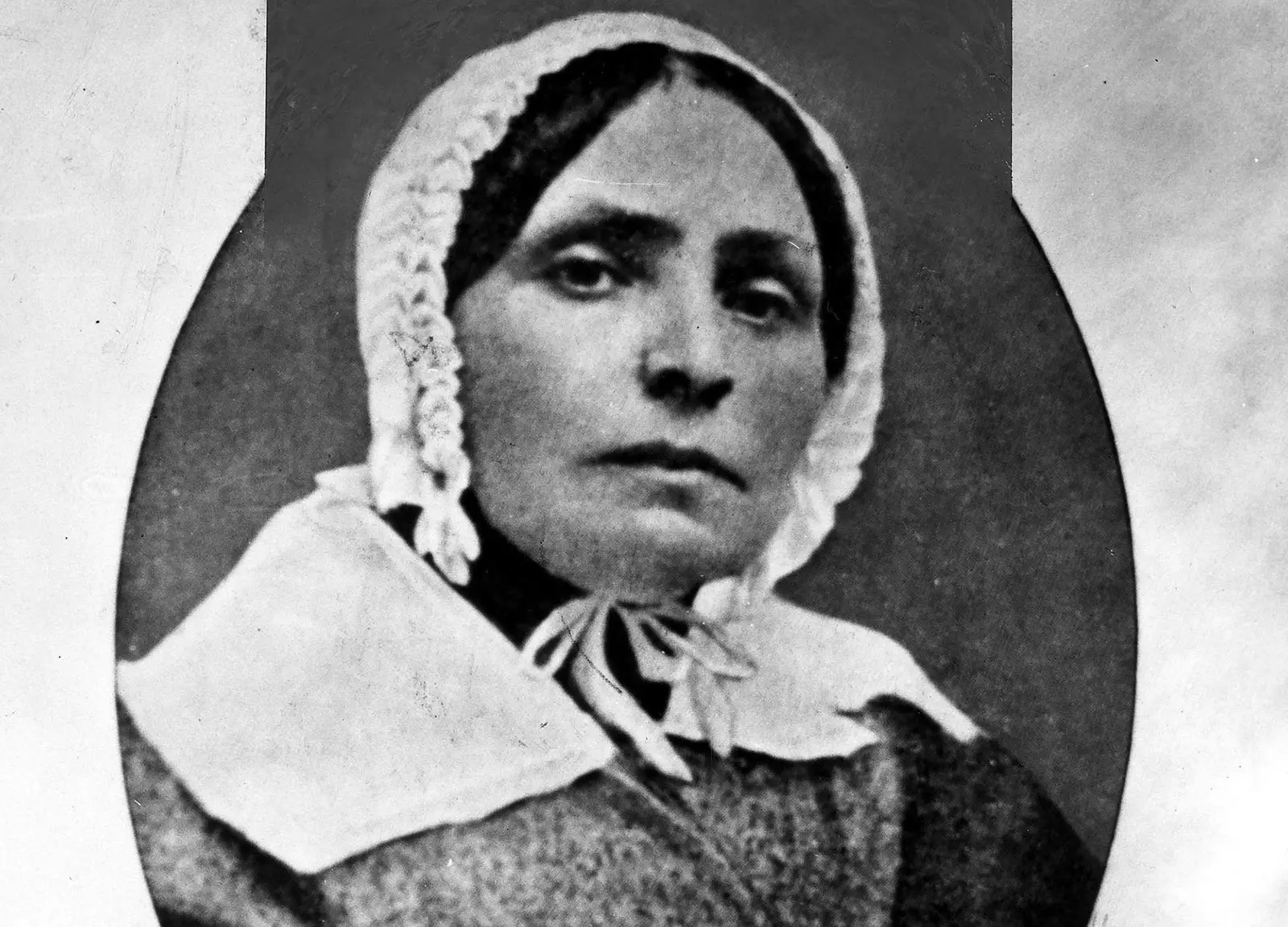
Ida was traveling alone, something unusual in her time
Ida Pfeiffer she began to travel to the forty-five years. Until then, nothing announced that she would go around the world twice and that their chronicles of her would become editorial successes.
“Just as an artist is moved by the desire to paint or a poet to give expression to his thoughts, I am driven by the desire to see the world. In my youth I dreamed of traveling; at maturity I am pleased to reflect what I contemplate ”.
In the mid-nineteenth century, women arrived in the tropics as the wife of an official, a clergyman, a scientist or an explorer. Ida was traveling alone.
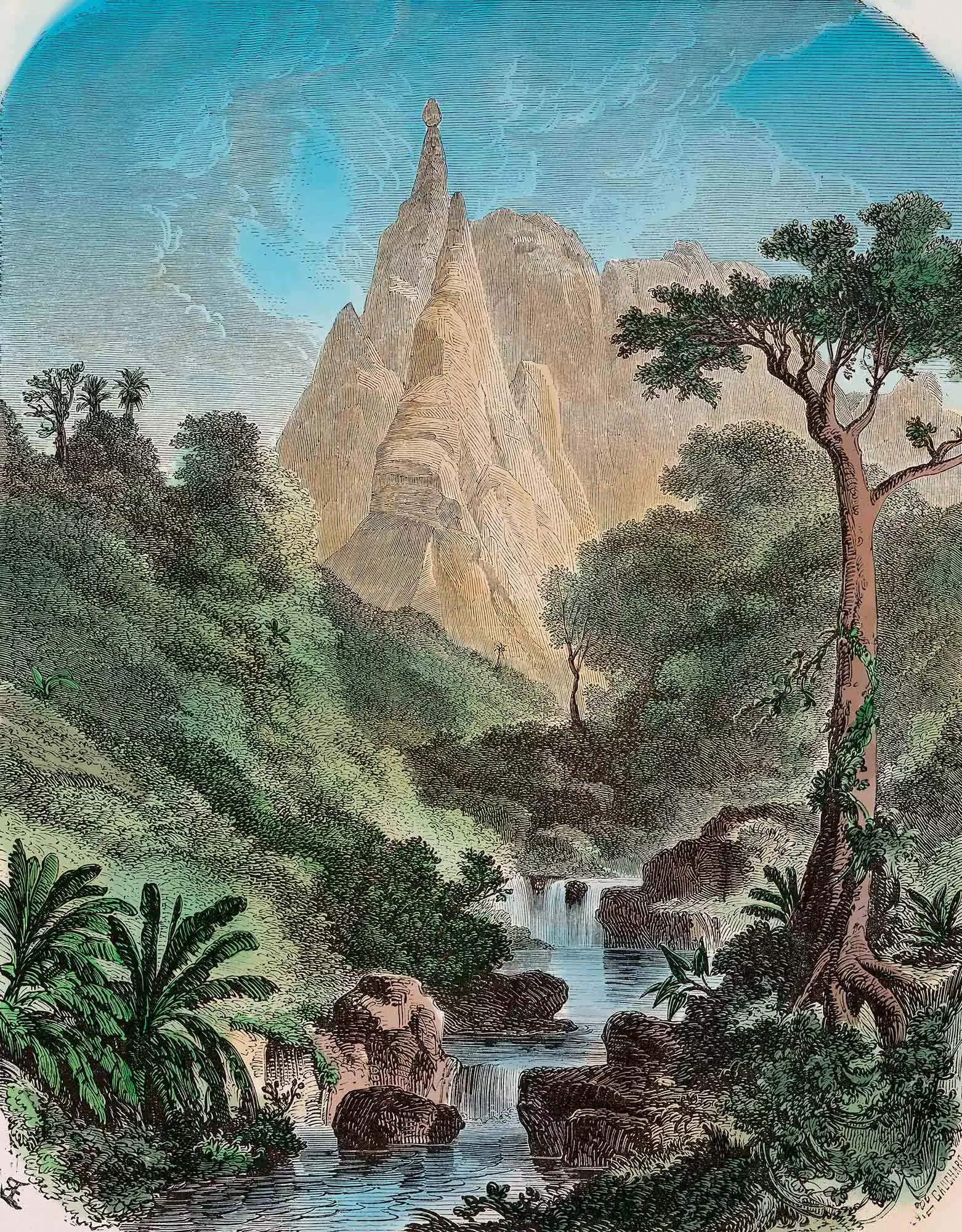
Illustration by the painter Évremond de Bérard of Ida's voyage to Mauritius
She considered herself old and unattractive, and that status gave her the advantage of invisibility . Her age facilitated the support of colonial representatives and merchants who they would have considered it inappropriate for a young woman to travel unaccompanied.
Only in the unexplored areas was the license allowed. a local guide and a porter. She lacked the means that would have allowed for trunks and servants, so her luggage was reduced to a minimum required to maintain correctness.
Her austerity was the fruit of a rigorous education. Her father, a Viennese textile manufacturer, treated her the same as her brothers. Ida wore the same clothes as her and participated in her games. She never had a penchant for dolls.
When her father died, her family tried to turn pants and drums into fashionable dresses and piano lessons, but her inclinations had been defined in the field of the masculine.
The tutor infatuation that she oversaw her teaching channeled her femininity into the normative. She assumed her condition as a young bourgeois and even she learned, without great interest, to sew and cook. But her mother disapproved of the union.
Ida was forced to accept a marriage proposal from a lawyer who had a provincial position.
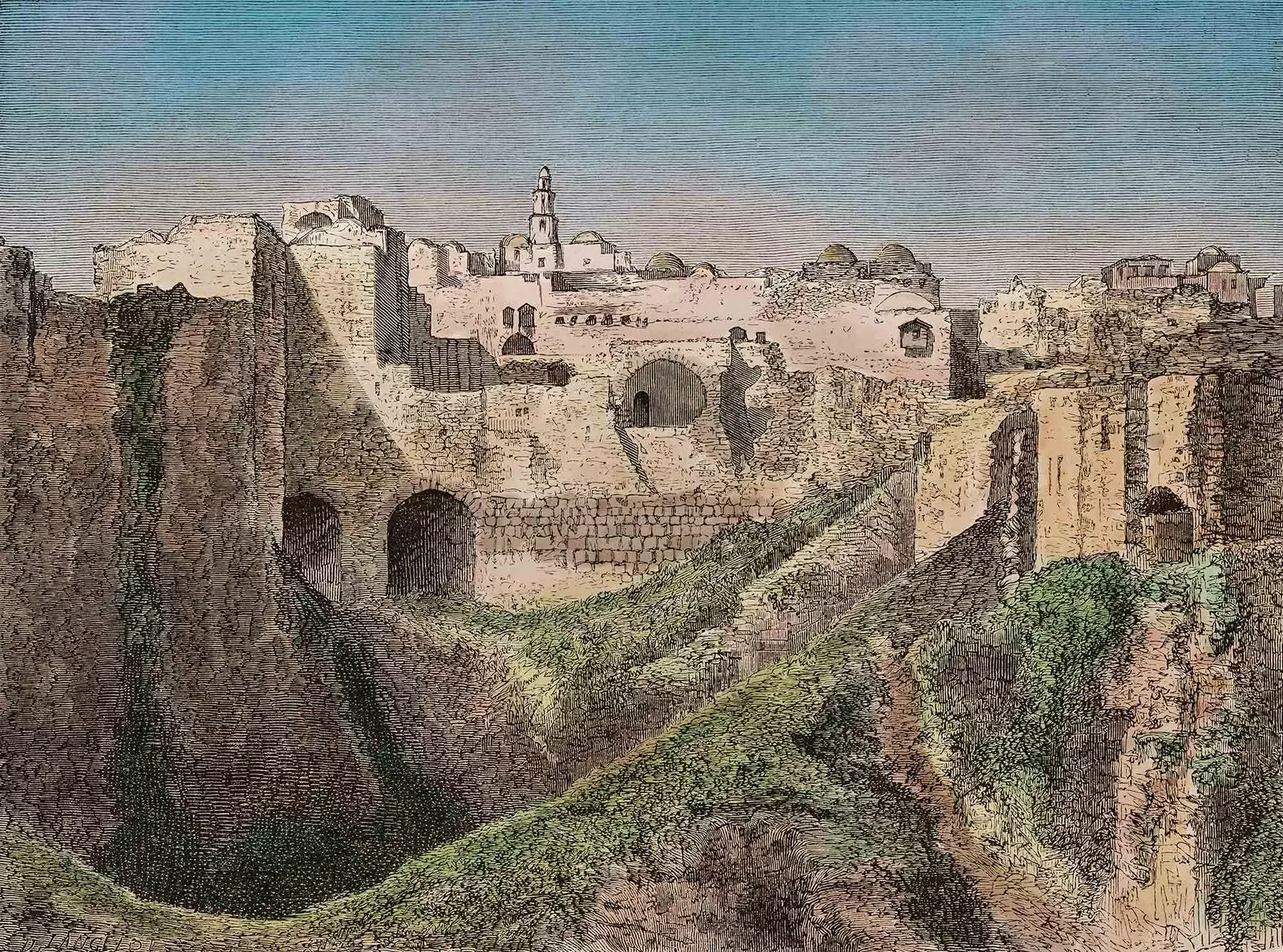
Lithographer Dieudonné Lancelot's illustration of Ida's journey to Jerusalem
She had clearly defined the reasons that led her to the altar and, when a corruption scandal aggravated her coexistence, she made the decision to separate from her. she went back to Vienna and she fell back on her family's meager income until her children achieved independence.
The marriage was for Pfeiffer a point of escape: "Only God knows what I suffered during those eighteen years!", She affirmed.
In 1842 she had turned forty-five. She wanted to travel, but she was a woman and lacked a great fortune. She lied to her children. She said that she was going to visit an acquaintance in Istanbul and from there she expanded her itinerary to **Jerusalem, Egypt and Rome.**
She took notes and dumped her reflections into a journal. Upon her return to Vienna She, at the insistence of a publisher friend, agreed to publish it under her initials under the title of Journey of a Viennese to the Holy Land. Until the third edition she did not reveal her identity.
Her observations tended to remain on the margins of the correct. She insisted that she had no literary or scientific ambitions, but her gaze was critical . In Acre she was invited to visit the harem of the pasha
Pfeiffer found the women who made it up ignorant and inquisitive: they could not read or write, nor did they know any foreign language. She communicated with them through gestures. She did not appreciate signs of beauty, unless, she commented, that her robustness could be considered beautiful.
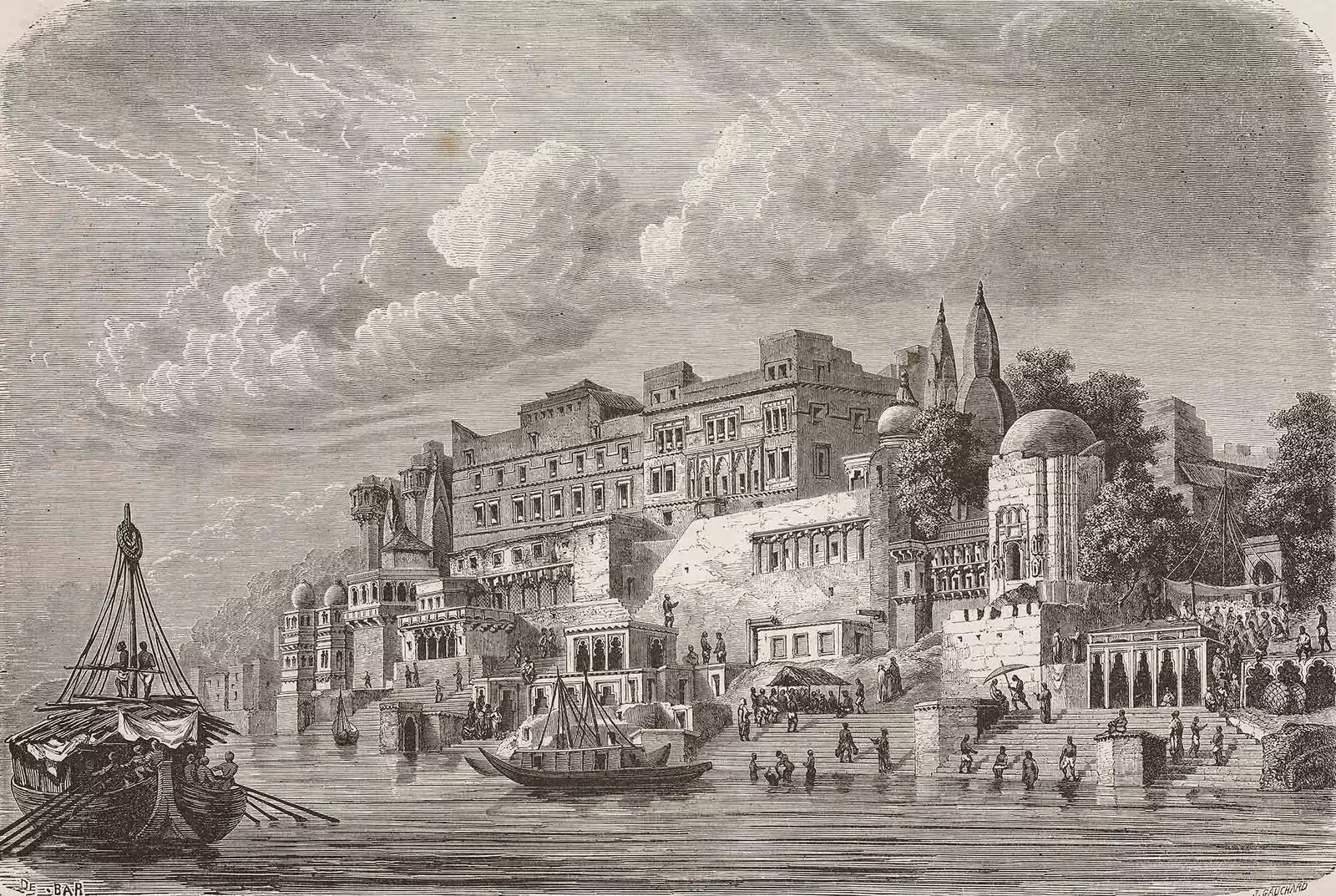
Drawing by A. de Bar of the globetrotter's journey to Varanasi (India)
Three years later she embarked bound for Iceland from Denmark. The sea journey lasted for eleven days. She had learned to take daguerreotypes and to preserve specimens of fauna and flora. The need to justify your trips It is clearly seen in her first writings.
In this case, her alibi was the search for a primal nature. she found it in the fumaroles of the Krýsuvík geothermal area , where she camped, and on the ascent to the Mount Hekla.
After this trip she verified that the benefits of the publication of her chronicles and the sale of the specimens to the natural history museums ** Vienna and London ** allowed him to expand the scale of her expeditions. Between 1845 and 1855 she circumnavigated the world twice.
The first took her to ** Brazil, Chile, Tahiti, China, India, Persia, Asia Minor, and Greece.** She relied on colonial authorities and established German merchants.
In Brazil she witnessed with awe forest fires and he contemplated the advance of a swarm of ants through the house where he was staying; in Canton, present-day Guangzhou, she dressed in male attire to enter the taverns of the port; Y he crossed Persia in a caravan between Bedouin attacks.
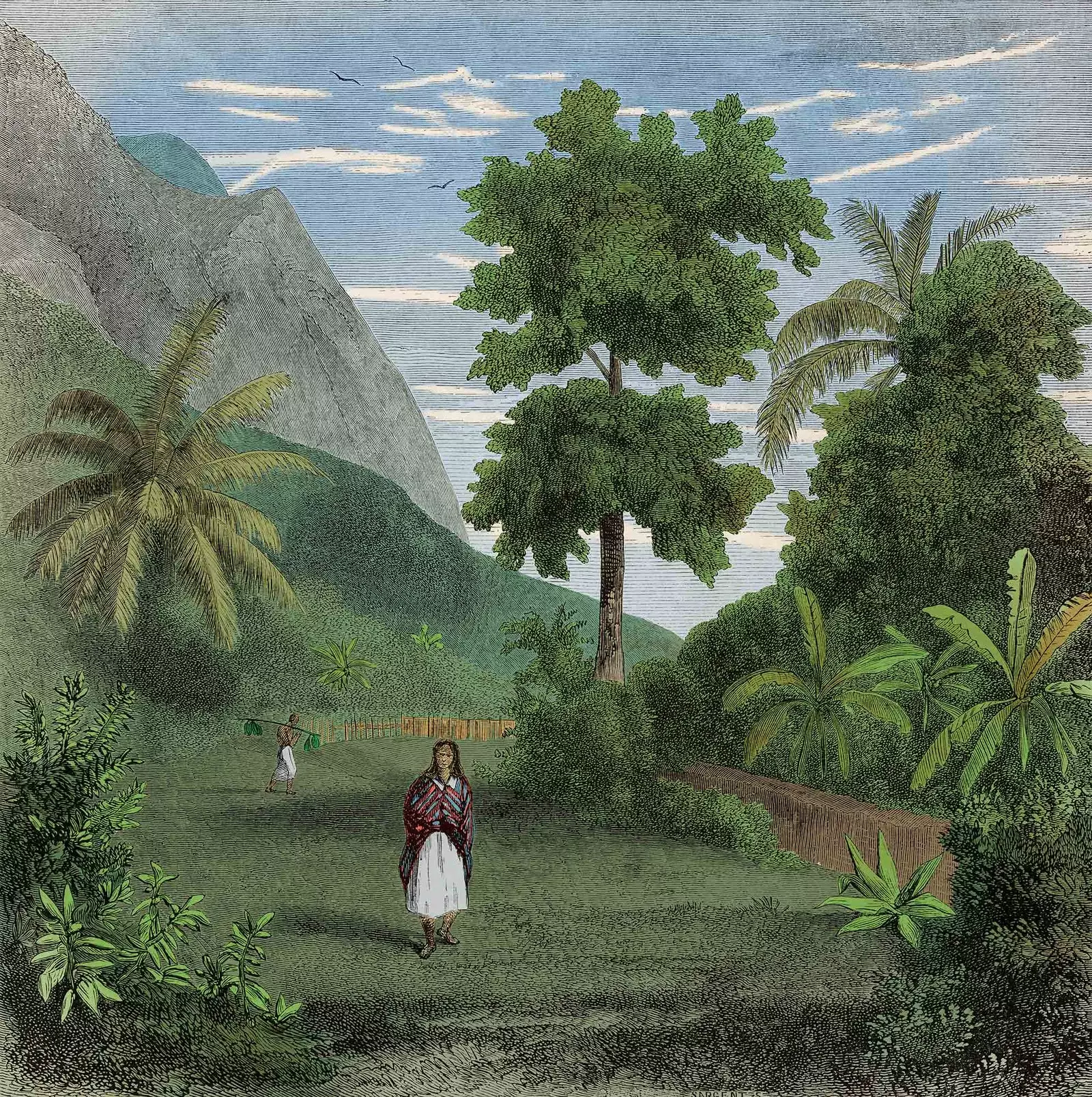
Évremond de Bérard's illustration of Ida Pfeiffer's Voyage to Tahiti
She made the second trip around the world in the opposite direction. The chronicle of her visit to Indonesia became famous. It aimed to meet tribes uncontaminated by colonial contact. She crossed the jungle of Borneo to the territory of the Dayaks , who cut off the heads of their enemies and nailed them to pikes in front of the towns.
The Bataks of Sumatra were cannibals. Years before they had killed and swallowed two missionaries. She was well received in the villages. They danced welcome dances for her. As he entered her territory, the atmosphere became hostile.
At the last stop the warriors they threatened to cut off her neck and arms with her spears. Ida replied in a mixture of Malay and Batak that they wouldn't have the bad taste to eat a woman, especially an old woman.
Her journey ended in a last trip to ** Madagascar.** There she was accused, along with ten other Westerners present on the island, of plotting to overthrow the queen. She escaped with her life after the trial her, but she had contracted malaria. She died a few months later in ** Vienna **.
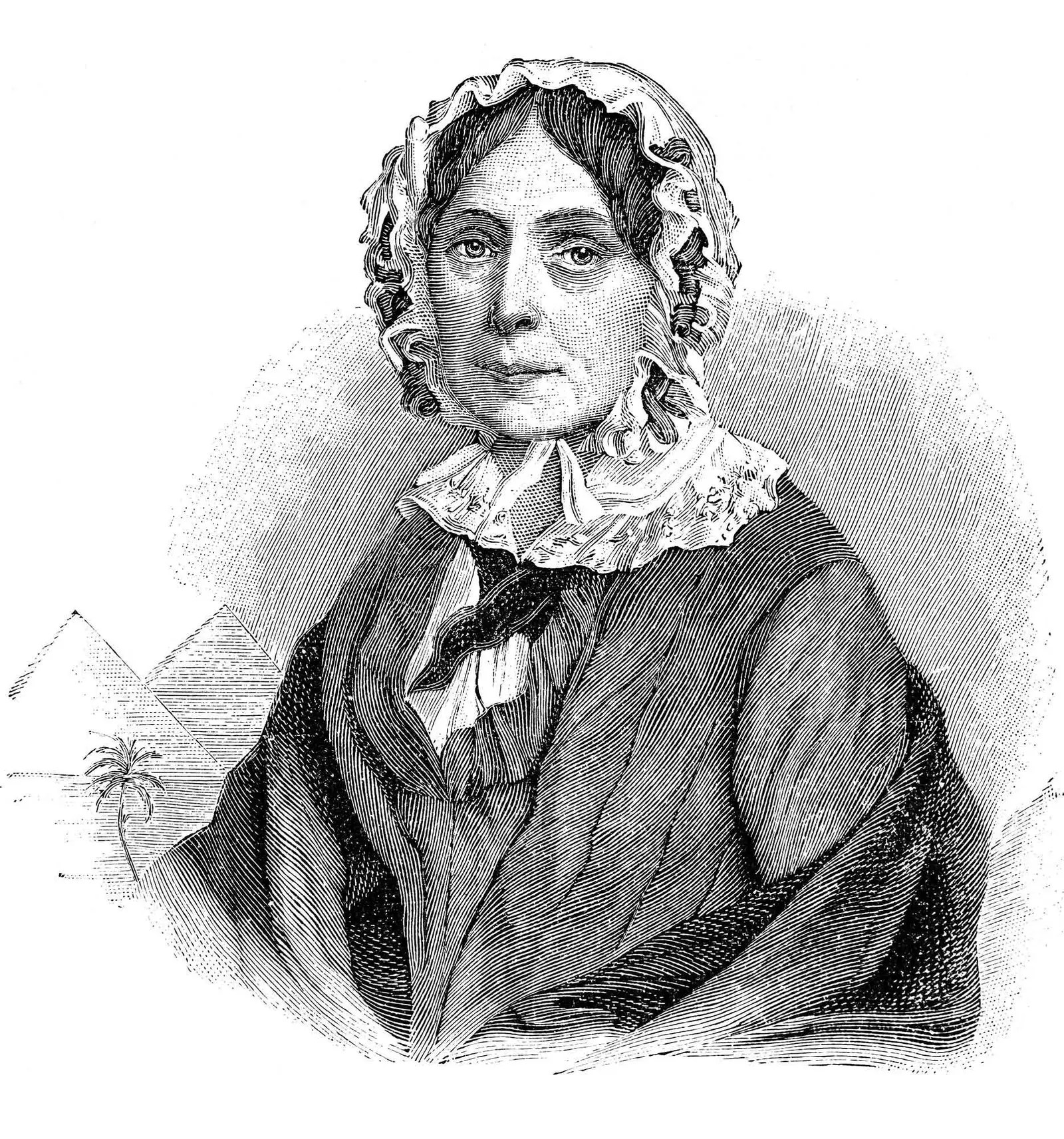
Portrait of the Austrian traveler Ida Pfeiffer
Sixteen years had passed since her trip to istanbul . Pfeiffer's chronicles were translated and sold out of her editions. Her gaze had acquired confidence and she sometimes approached ethnography, the natural sciences, but she stopped short of crossing the limits of what was expected of a traveler.
Her independence stemmed from courage and extreme austerity. She kept her rebellion under an old woman's guise.
